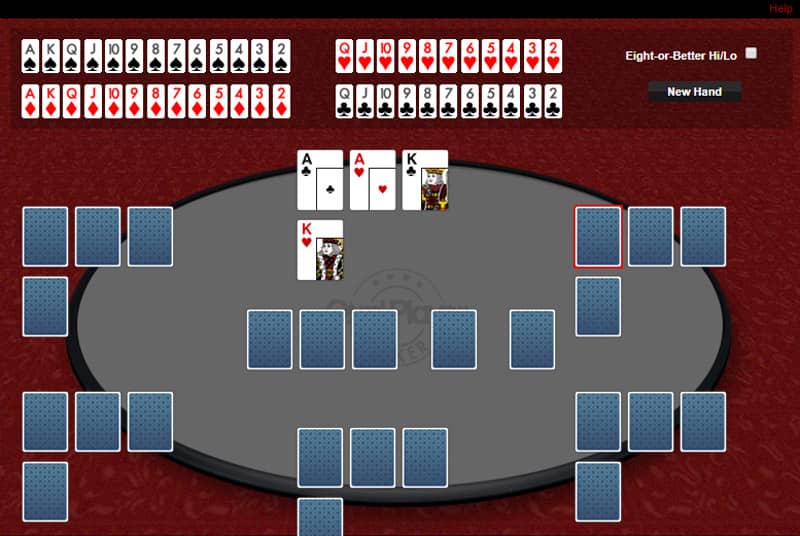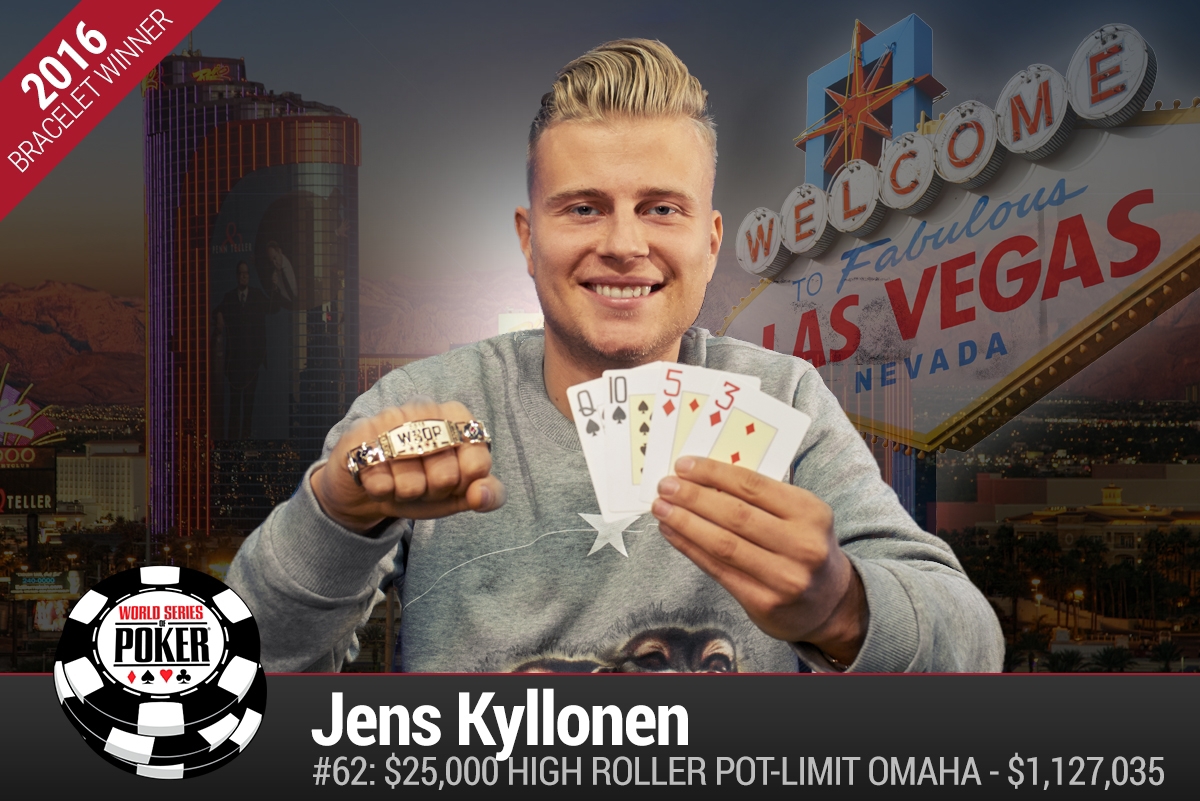Plo Rules
How To Calculate The Pot In PLO
In short, position is key in 6-max PLO strategy and you should look to be playing the majority of your reasonable starting hands from the button or cut-off seats.
Omaha is a community-card game played with two to ten players on one table. You win chips by winning a pot and you win a pot in one of two ways: All the other players fold their hands, making you the only player left in the pot. You have the best hand at the showdown. PLO Poker Guide is a site dedicated to Omaha poker. Read on for a complete beginner’s guide to PLO poker including rules, strategy, tips and more. 5 Card Omaha is one of the rarer poker variants out there. Typically it is only played as part of mixed game rotations and very few online poker sites offer the game. The game is virtually identical to traditional four card Omaha (PLO), but with the obvious difference that each player receives 5 hole cards.
The most common betting structure for Omaha is Pot Limit. Unlike No-Limit Hold’em, where you can bet all your chips at any point, in Pot-Limit Omaha (PLO), the maximum you can bet is the size of the pot. (The same minimums apply as in No-Limit Hold’em.)
Unfortunately, calculating exactly how much the “pot limit” is in PLO is less straightforward than it might seem. In this article we are going to explain how to calculate the maximum bet in PLO given your situation.
Suppose you are first to act on the flop, and there is $20 in the pot. This case is simple – you can bet up to $20.
It’s more complicated though if you are already facing a bet, because you have to include the cost of your call into the pot size.
This sounds very strange at first, and it is. In other words, the pot size is defined as:
- the amount in the pot before your opponent bet PLUS
- your opponent’s bet PLUS
- the amount you would have to put in to call.
Once you come up with that number, that is the amount you’re allowed to RAISE (on top of the cost to call).
Let’s take an example of that so it will be clearer. There is $20 in the pot on the flop, and your opponent bets $10.
- the amount in the pot before your opponent bet: $20
- your opponent’s bet: $10
- the amount you would have to put in to call: $10
Add those all up and we get $40, which is the amount you can RAISE (in addition to the $10 you would have to put in to call). In other words, you can put in $50 total.
If that’s confusing, there is a short-hand for the math. You can bet three times the last bet plus whatever was in the pot before that bet. Note that the last “bet” is only on the current round of betting. So if you are the first to bet on the flop, turn, or river, there is has been $0 bet so far. The previous street’s betting has no effect (except to create what is in the pot currently). Pre-flop, the posted blinds are bets, so if you raise you must consider the value of the blinds in your calculation.
Let’s look at several examples of using the “Rule of Three”.
Example #1
Question: Pre-flop, you are under the gun. The blinds are $5 and $10. What is the maximum you can bet?
Answer: The last “bet” (the big blind) was $10, and what was in the pot before that was $5. So the math is (3 x $10) + $5. You can bet up to $35.
Plo8 Rules
Example #2
Question: Pre-flop, you are on the button. The blinds are $1 and $2. There are three limpers in front of you. What is the maximum you can bet?
Answer: The last “bet” was $2 (the final limper), and what was in the pot before that was $7 (the blinds plus 2 other limpers). So the math is (3 x $2) + $7. You can bet up to $13.
Example #3

Question: In a $2/$5 game, there is $15 in the pot pre-flop. On the flop, you want to open for pot. What is the maximum you can bet?
Answer: This is the easy one! No betting has been conducted in this round. So you can match what’s in the pot pre-flop. You can bet $15.
Plo Hi Rules
Example #4
Question: There is $10 in the pot. Player A in front of you bets $5. What is the maximum you can bet?
Answer: The last bet was $5. There was $10 in the pot before that. (3 x $5) + $10 = $25. You can bet up to $25.
Example #5
Question: There is $10 in the pot. Player A bets $5. Player B raises to $25. What is the maximum you can bet?
Answer: The last bet is $25. There was $15 in pot before that. (3 x $25) + $15 = $90. You can bet up to $90.
At first calculating the pot limit can seem daunting. Eventually you will get the hang of it. In the meantime, you can always just announce that you bet “pot” and the dealer will figure it out for you!
When playing on OmahaPokerTraining.com, you can use the bet slider to see the minimum and maximum amount you can legally bet or raise. Slide the bar all the way to the left and you’ll see the minimum amount. Slide all the way to the right to see the maximum (“pot”) bet.
Read all our instructional articles
Pot Limit Omaha is perhaps the second most-played format of poker in the world, trailing only No Limit Hold'em in terms of popularity. Proponents like the action and the strategic complexity that comes along with Pot Limit Omaha, but new players can sometimes get tripped up on the basic mechanics of the game. If you're looking to learn the game, you've found a solid place to start with our guide to the rules of Pot Limit Omaha.
Before we talk about how to play the game, here are some key terms and definitions that will help make our discussion more efficient:
- PLO: The standard abbreviation for Pot Limit Omaha.
- Bet the pot: Since you can only bet up to the size of the pot in PLO, saying 'I bet the pot' or 'I raise the pot' is saying 'I want to make the maximum bet possible.'
- Blinds: Like No Limit Hold'em, PLO forces two players to put in 'blind' bets before anyone gets cards. These forced bets are called the small blind and the big blind, or SB / BB. Some PLO games (especially live games) are played with a forced third blind called a straddle, but this blind is not a part of the standard rules for PLO.
- The button: A disc or other symbol that represents the rotating dealer position.
Pot Limit Omaha: Basic Gameplay
Pot Limit Omaha plays just like No Limit Hold'em except for two crucial differences:
- In PLO, you get four hole cards instead of two.
- In PLO, your maximum bet at any point is limited to the current size of the pot. You can't go 'all-in' in PLO unless your stack size is smaller than the size of the pot.
Otherwise, the mechanics of the two games are identical, so you can refer to this guide to the rules for No Limit Hold'em for a more complete breakdown of PLO gameplay. Abridged version: Players receive four cards each, face down followed by a betting round. The remaining players move to the flop, where three shared cards are revealed followed by betting. Next comes a fourth card (the turn) and a third round of betting, followed by a fifth card (the river) and a final round of betting.
Pot Limit Omaha: How You Make a Hand
Poker Plo Rules
Players used to hold'em often have trouble internalizing this aspect of PLO. When you're playing Pot Limit Omaha, you must use two cards from your hand and three cards from the community cards to make your five card hand. You can use any combination of cards following this rule, but the rule itself is rigid. A common situation where players become confused about this rule: Let's say you hold the ace of hearts in your hand and the board has four hearts on it. You have no other hearts in your hand besides the ace. Do you have a flush?
Plo Rules
In hold'em, you would have a flush, but in PLO you cannot make a flush in the situation described above. Remember - two from your hand and three from the board. For this reason, it's actually terrible to be dealt three of a kind of four of a kind to start in PLO - you can only use two of those cards.

Pot Limit Omaha: Betting Rules
Thanks to a technicality that new players often overlook, betting and raising the pot can be a trickier task than you might think. Let's say you're playing PLO and are in a hand with just one opponent remaining. The size of the pot is $100, and your opponent bets $100. How big a raise can you make? If you said $200, you're wrong - but don't feel too bad about it, as everyone struggles with this part of PLO at the outset. Your actual raise size is $400 total.
Why? Because the size of the pot when you make your raise isn't actually $200. The sequence of betting goes like this: Your opponent bets, you first call that bet and then you raise. Your call counts toward the size of the pot for the purposes of figuring out how big a bet you can make. That means there's actually $300 in the pot, so your total bet would be ($100 call + $300 pot-sized raise) $400.
With the basics of PLO firmly under your belt, it's time to visit some of our top site lists to find your best option for playing Pot Limit Omaha at an online poker room.